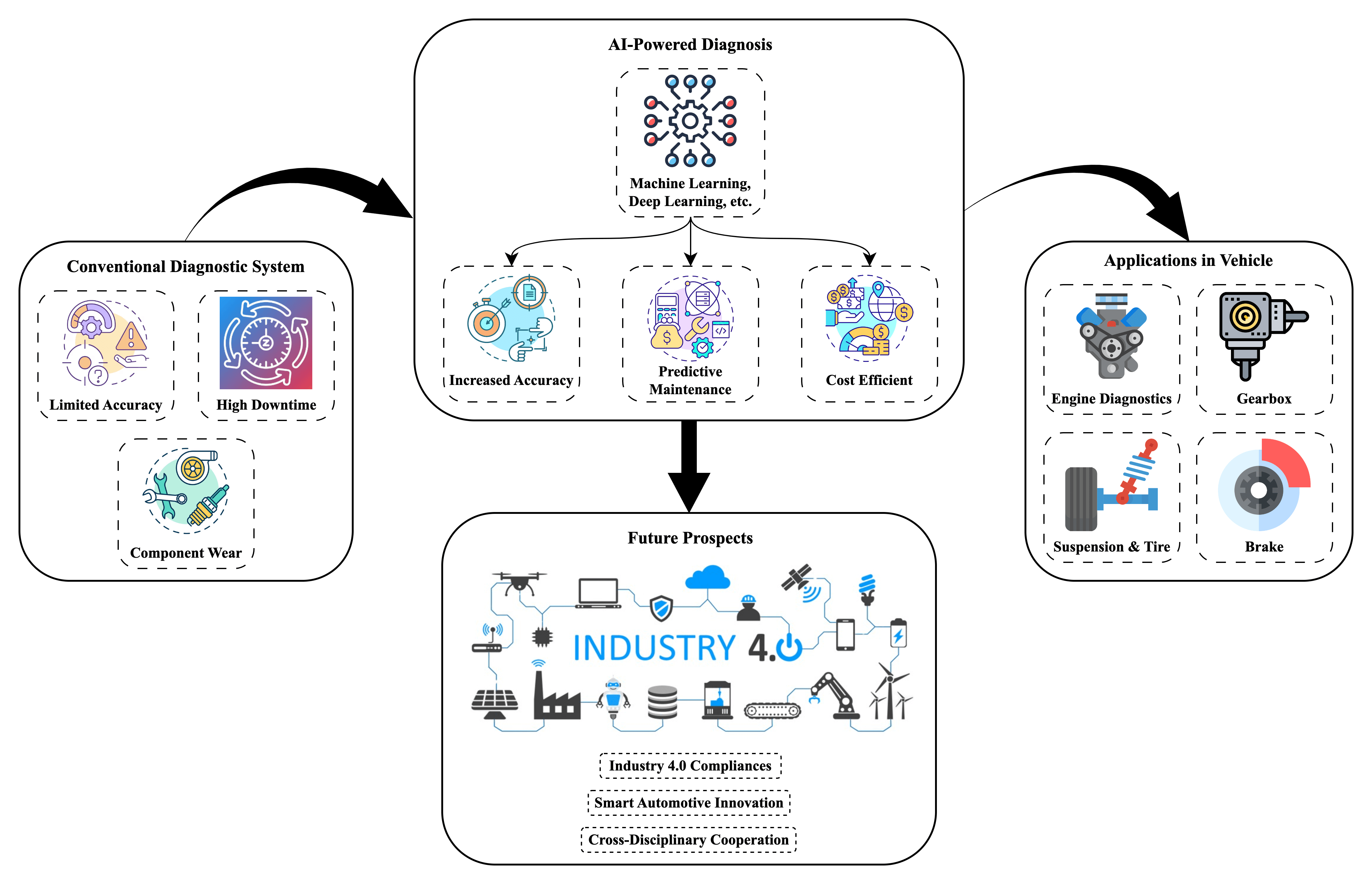 Open Access
Open Access
REVIEW
Artificial Intelligence-Driven Vehicle Fault Diagnosis to Revolutionize Automotive Maintenance: A Review
1 Faculty of Mechanical and Automotive Engineering Technology, Universiti Malaysia Pahang Al-Sultan Abdullah, Pekan, 26600, Malaysia
2 Automotive Engineering Center, Universiti Malaysia Pahang Al-Sultan Abdullah, Pekan, 26600, Malaysia
* Corresponding Author: Md Mustafizur Rahman. Email:
Computer Modeling in Engineering & Sciences 2024, 141(2), 951-996. https://doi.org/10.32604/cmes.2024.056022
Received 12 July 2024; Accepted 23 August 2024; Issue published 27 September 2024
Abstract
Conventional fault diagnosis systems have constrained the automotive industry to damage vehicle maintenance and component longevity critically. Hence, there is a growing demand for advanced fault diagnosis technologies to mitigate the impact of these limitations on unplanned vehicular downtime caused by unanticipated vehicle breakdowns. Due to vehicles’ increasingly complex and autonomous nature, there is a growing urgency to investigate novel diagnosis methodologies for improving safety, reliability, and maintainability. While Artificial Intelligence (AI) has provided a great opportunity in this area, a systematic review of the feasibility and application of AI for Vehicle Fault Diagnosis (VFD) systems is unavailable. Therefore, this review brings new insights into the potential of AI in VFD methodologies and offers a broad analysis using multiple techniques. We focus on reviewing relevant literature in the field of machine learning as well as deep learning algorithms for fault diagnosis in engines, lifting systems (suspensions and tires), gearboxes, and brakes, among other vehicular subsystems. We then delve into some examples of the use of AI in fault diagnosis and maintenance for electric vehicles and autonomous cars. The review elucidates the transformation of VFD systems that consequently increase accuracy, economization, and prediction in most vehicular sub-systems due to AI applications. Indeed, the limited performance of systems based on only one of these AI techniques is likely to be addressed by combinations: The integration shows that a single technique or method fails its expectations, which can lead to more reliable and versatile diagnostic support. By synthesizing current information and distinguishing forthcoming patterns, this work aims to accelerate advancement in smart automotive innovations, conforming with the requests of Industry 4.0 and adding to the progression of more secure, more dependable vehicles. The findings underscored the necessity for cross-disciplinary cooperation and examined the total potential of AI in vehicle default analysis.Graphic Abstract

Keywords
Cite This Article
 Copyright © 2024 The Author(s). Published by Tech Science Press.
Copyright © 2024 The Author(s). Published by Tech Science Press.This work is licensed under a Creative Commons Attribution 4.0 International License , which permits unrestricted use, distribution, and reproduction in any medium, provided the original work is properly cited.


 Submit a Paper
Submit a Paper Propose a Special lssue
Propose a Special lssue View Full Text
View Full Text Download PDF
Download PDF Downloads
Downloads
 Citation Tools
Citation Tools
